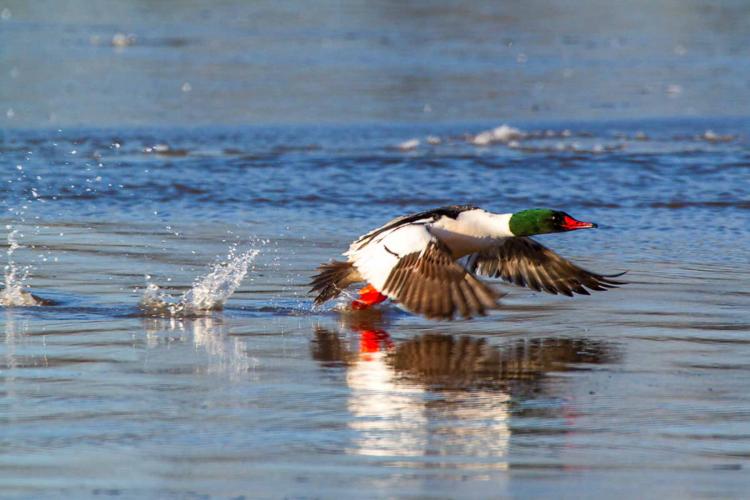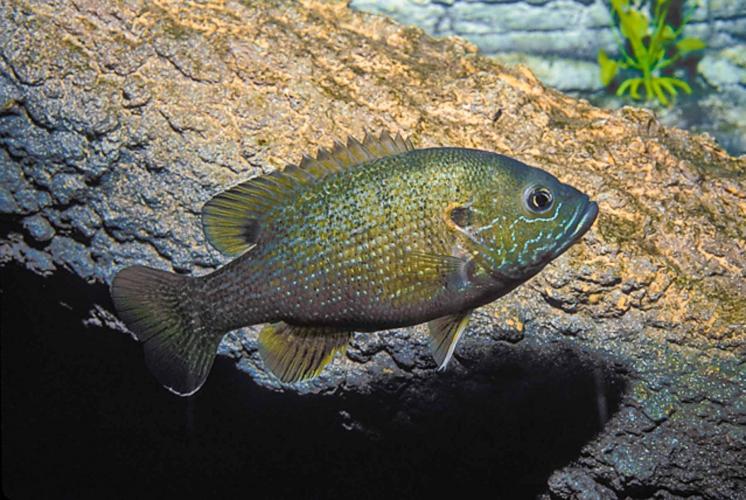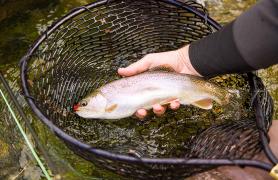These critters are the scrappiest, snappiest, and flappiest around. But only one will win this battle in the bulrushes.
Every year in March, the best college basketball squads from across the country compete in a super tournament to see who has the top team. Sports fans call this event March Madness.
And every year in March, millions of ducks and geese descend on Missouri’s wetlands to rest and refuel on their way north to nest. In our mucky marshes and soggy swamps, these feathered visitors join thousands of local critters — such as muskrats, mink, and snapping turtles — who are suddenly busy after a slow winter. Visiting a marsh in March offers a chance to see one of nature’s truly epic events.
So what would happen if you combined these two March marvels? What if wetland creatures competed to find out who was marsh master? Xplor has you covered.
Sweet 16
- Mink are as quick and nimble as ninjas. And strong jaws let them sink fangs into the skulls of prey. But muskrats can hide underwater for 17 minutes. So this clash hinges on location. Mink win on land. Muskrats win in water.
- Gizzard shad swim in schools. When a predator is spotted, the school splits apart in a flash of slippery silver. Mergansers have webbed feet that churn like canoe paddles and toothy beaks that are perfect for piercing prey.
- If a crayfish’s pinchy claws and armor-clad body doesn’t discourage foes, it can flick its tail to shoot backward under a rock. River otters, however, swim faster than many fish and have special teeth to crush shells.
- You’d bet a snail’s shell would protect it from a weak-beaked mallard. But like most birds, mallards have a gizzard, an organ that grinds up hard foods like grains, insects, and snails. This really isn’t much of a match.
- Chorus frogs bag bugs along the edges of marshes. Snapping turtles prefer deeper haunts. The thumb-sized frog is barely an appetizer for a snapper, but if it wanders too close to the turtle’s open jaws, the frog might croak.
- Green herons miss half the prey they try for, so they sometimes drop bait into water to lure fish into range. If a green sunfish spots the heron, it can out-swim the bird’s beak. But if the fish takes the bait, it’s sushi.
- With large eyes that see in nearly all directions at once, it’s hard to sneak up on a dragonfly. But bullfrogs can unroll their long, sticky tongues to snare prey. And they can do it five times faster than you can blink.
- Nerve cells on each side of a minnow feel vibrations in the water, giving the fish a jump on predators. But if a watersnake grabs a fish, there’s little hope for escape. The snake’s hooked teeth are made to hold slippery fish.
Elite Eight
- After winning its first battle, the slinky mink is hungry for more. To subdue prey, mink wrap their skinny bodies around victims and bite so quickly it’s hard to follow with the human eye. Of course, mergansers can fly to escape predators, but they must pitter patter on the water to get airborne.
- Though the otter dominated its first match, its next won’t be so easy. Mallards have super-sharp vision and can watch above, below, forward, and backward at the same time. So sneaking up on this wary duck is almost impossible. And if a threat is spotted, a mallard can rocket straight up off the water.
- After chomping the frog, the snapper sinks underwater to digest its win. Half-buried in marsh muck, the turtle’s mud-colored skin and algae-covered shell offer perfect camouflage as it awaits its next opponent. Green herons stalk fish by wading silently through shallow water. Will the bird wade too deep?
Final Four
Both of these meat-munching mammals deserve their spot in the final four. As members of the weasel family, mink and river otters share many of the same traits. For example, mink are so at ease in water, they’ve been seen floating down streams curled up in balls, apparently sound asleep. And while pursuing fish and other aquatic prey, otters often twist their streamlined bodies into turns so tight it would make a ballet dancer dizzy.
So they’re both great swimmers. But who will win this war in the water? It may come down to size. From the tip of its bitey snout to the end of its furry tail, a mink rarely measures longer than 2 feet. Otters, on the other paw, are usually more than twice that size.
In this round between reptiles, there’s no way for a northern watersnake to take down a snapping turtle. Unlike their cottonmouth cousins, northern watersnakes aren’t equipped with fangs or venom. So biting the snapper won’t do much damage, especially when you consider the turtle’s tough shell. And snakes swallow their prey whole. Even though the snake’s jaws can open freakishly wide, there’s no way it could stretch its pie-hole around a full-grown snapper.
But don’t write the snake off yet. Watersnakes are quick, twisty, and nimble on land and in water. And turtles aren’t known for their speed. Rather than chase down prey, snappers prefer to hide in the marsh muck and wait patiently for prey to come to them. As long as the snake doesn’t stray into snapping range, catching it could be a challenge.
Marsh Madness Championship
The final match of Marsh Madness is a contest between slow and bitey versus quick and mighty.
The snapping turtle’s tough shell protects its body like a knight’s suit of armor. But it’s heavy. So although the snapper can lunge quickly, it usually plods slowly. And unlike many turtles, a snapper can’t pull its head or legs completely into its shell. Its plastron — the lower shell — is barely big enough to cover its belly.
Sure, the river otter has superior speed and agility, but the fierce furbearer better beware of the snapper’s serious bite. Contrary to popular belief, a human can actually bite harder than a snapping turtle. Yet a snapper’s sharp, bony beak can easily shear off a finger — or a careless otter’s paw. And when a snapper grabs something in its jaws, it rarely lets go.
The final battle was epic! Using its speed and agility, the otter managed to escape the snapper’s crushing jaws. It herded the turtle into shallow water then flipped the cold-blooded beast onto its back. It was over soon after that. The turtle’s lower shell was no match for the otter’s bone-crunching teeth, and in short order, the snapper was chomped.
In this made-up matchup, the river otter won. But in real life, otters haven’t always been so lucky. When Missouri first became a state, people didn’t take care of nature. They drained marshes and polluted rivers. With fewer places to hunt for food and raise babies, river otters almost disappeared.
Luckily, people cleaned up their act. By the 1980s, there were enough healthy habitats for biologists to release several hundred otters into wetlands and rivers across the state. Before they started, there were fewer than 100 otters in Missouri. Today, otters are common across the state. You might say it was an otter success!








































Also In This Issue

This Issue's Staff
Les Fortenberry
Angie Daly Morfeld
Noppadol Paothong
Marci Porter
Mark Raithel
Laura Scheuler
Matt Seek
David Stonner
Stephanie Thurber
Cliff White






















